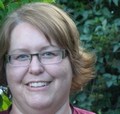Alberta hosts first of five in the "Across Canada Workshop Series" on Resilient Rainwater Management (Oct 23)
Partnership for Water Sustainability in BC will visit Calgary on October 23, 2014
Formed in 2004, the Alberta Low Impact Development Partnership (ALIDP) offers training, expertise & networking to professionals seeking to implement sustainable urban rainwater/stormwater management solutions suitable for the Northern Prairies. Each year, ALIDP presents a suite of courses encompassing training, certification and policy development.
In August of 2008, the Alberta Low Impact Development Partnership Society was registered under the Alberta Societies Act.
About the BC Connection
“Back in 2004 folks from the Pacific Northwest visited Alberta to talk about their learnings in sustainable stormwater management. Those discussions were part of the early impetus to the formation of the ALIDP,” reflects Leta van Duin, ALIDP Executive Director.
“Ten years later…what are Ted van der Gulik, Kim Stephens, Jim Dumont, and Richard Boase up to? How has rainwater management evolved in B.C.? How does it compare to Alberta and the rest of Canada? Of particular note will be the application of water balance modelling to lot redevelopment and densification in North Vancouver.”
Genesis of ALIDP
“In the fall of 2004, the Alberta Lake Management Society (ALMS) held its annual conference in Okotoks entitled Smart Development: Protecting our Lakes and Watersheds Through Low Impact Development. ALMS invited Kim Stephens from B.C. and Tom Holz from Washington to talk about their experiences with sustainable drainage practices,” elaborates Leta van Duin.
“A pre-meeting was convened at Alberta Environment’s offices in order to hear what had been learned so far in B.C. Following the conference, a dedicated group of professionals continued to meet on a regular basis to discuss issues of mutual interest. It became apparent that a lot of effort would be necessary to break down silos, but that it would be imperative to do so, because better water management would not occur otherwise. The stage was set.”
Support from BC Partnership
“The impetus for this meeting was that we wished to explore collaboration with Albertans, and my participation in the ALMS Conference provided a reason to bring together  representatives of various Alberta organizations,” continues Kim Stephens, Executive Director for the Partnership for Water Sustainability in BC.
representatives of various Alberta organizations,” continues Kim Stephens, Executive Director for the Partnership for Water Sustainability in BC.
“In the formative years of ALIDP, members of our BC team visited Calgary on multiple occasions to support early efforts of the ALIDP founders. Looking back, the Innovations in Urban Development Conference held in Cochrane in 2006 was a milestone event.”
“Our BC team partnered with Bert van Duin, an ALIDP founder, to deliver a pre-conference workshop on the Water Balance Model scenario modelling and decision support tool. The workshop attracted an audience of over 90. Municipal representatives from communities throughout Alberta attended. We introduced the notion of thinking beyond the stormwater detention pond.”
Implementation of Water Balance Approaches
“Water balance approaches have since been adopted in several watersheds in Alberta, most notably the Nose Creek and Pine Creek watersheds in the Calgary area where a staged implementation of average annual runoff targets has been adopted,” continues Bert van Duin, Drainage Technical Lead with the City of Calgary Water Resources.
 “More recently, the City of Calgary has released interim stormwater targets that include runoff rate, runoff volume and water quality targets for all of Calgary – both green field and redevelopment. A few years ago, the City of Calgary released its own water balance spreadsheet.”
“More recently, the City of Calgary has released interim stormwater targets that include runoff rate, runoff volume and water quality targets for all of Calgary – both green field and redevelopment. A few years ago, the City of Calgary released its own water balance spreadsheet.”
“This tool is tailored to Calgary’s unique geography and climate, being able to represent frozen soil conditions in the winter months and allowing for the analysis of zero-discharge conditions.”
“This tool is now an integral part of the evaluation of various practices such as bioretention and rainwater/stormwater harvesting/capture and reuse. It provides a framework for meaningful interaction between our engineering and landscaping designers, breaking down traditional silos.”
Guidelines and Pilot Projects
“Both Calgary and Edmonton have released LID Design Guides, with Calgary soon planning to release detailed guidelines, standards and specifications, and checklists for various key practices,” adds Leta van Duin.
“Pilot projects can be found in all parts of Alberta, while various research initiatives are ongoing. The ALIDP has played an active role in many of these activities, providing expert advice to municipalities and hosting various training sessions across Alberta.”
To Learn More:
For registration information, visit http://abacws.eventbrite.ca
To learn more about the early history of ALIDP, visit https://alidp.org/about/history





